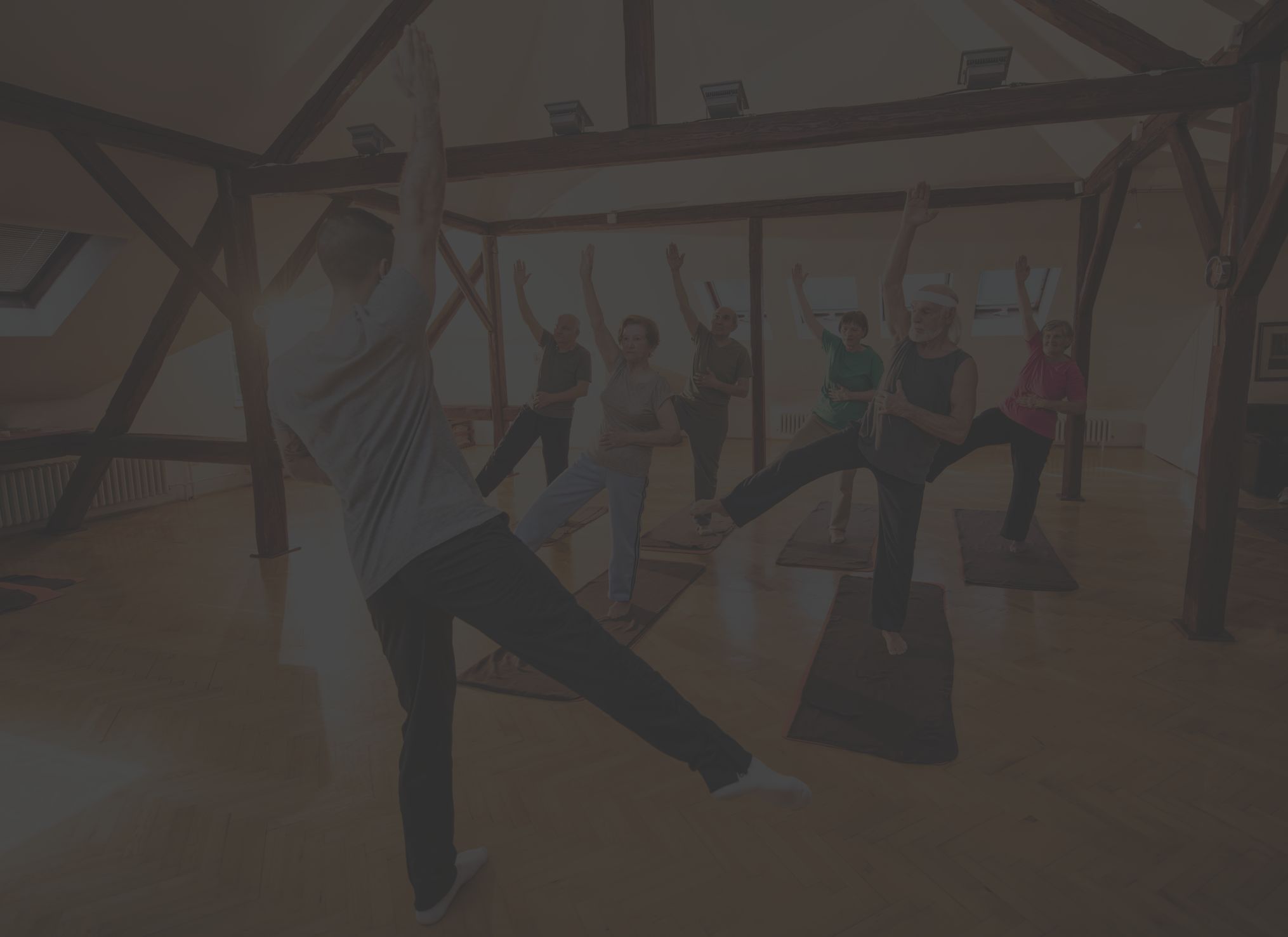8 yoga poses for arthritis pain relief
Reduce stress and relieve arthritis pain naturally by following this gentle yoga sequence.
Updated on March 4, 2022

If you have arthritis, stretching and flexing on a yoga mat may seem like the last thing you’d want to do. But gentle yoga poses may be just what you need to help ease joint pain.
In a 2019 analysis published in Current Rheumatology Reports, researchers reviewed nine randomized controlled trials of people with osteoarthritis. They found some evidence that yoga helps improve pain, function, and stiffness compared to other kinds of exercise or no exercise at all.
Another study of studies published the same year in American Journal of Physical Medicine & Rehabilitation found yoga was especially helpful in women with osteoarthritis who stuck closely to the program (as opposed to skipping sessions). And a 2018 study in Medicine (Baltimore) that looked at research in patients with either osteoarthritis or rheumatoid arthritis concluded that regular yoga training may reduce knee symptoms and improve physical function and overall well-being.
With the okay of your healthcare provider, try this sequence, which could help reduce your arthritis pain and improve your flexibility. If you’re less flexible, remember not to force your body into the positions. Just go as far as you comfortably can until you feel a gentle stretch, working your way a little further as you get more familiar with the moves.
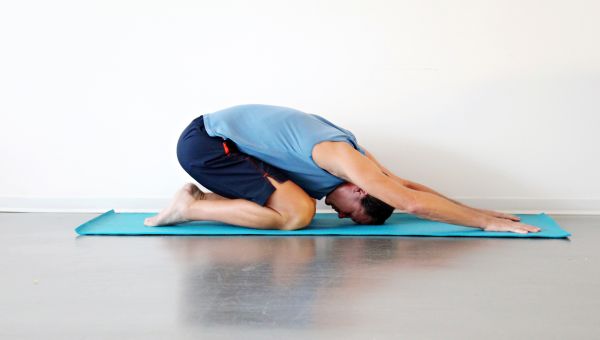
Child's Pose
Child’s pose is a gentle stretch to warm up your body, especially your lower back. Come down to your hands and knees, then sit back on your hips. Spread your knees wide and bring your toes together so your big toes touch. Sitting on your hips, fold forward, resting your head on the floor if you can. Stretch your arms out in front or keep them at your sides. Remain in this position as you take several deep breaths.
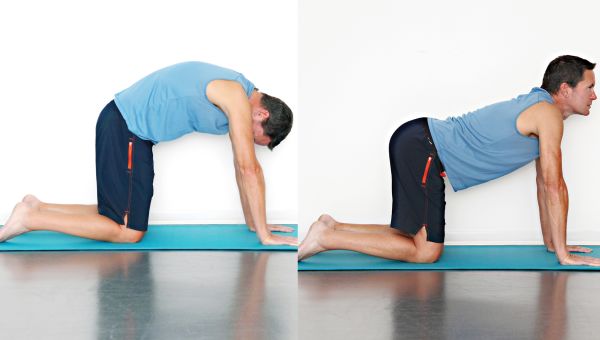
Cat-Cow
These two poses are especially good for reducing tension in your shoulders and neck. From child’s pose, start with your hands and knees on the mat about shoulder-width apart, your shoulders aligned over your wrists. Take a deep breath in and arch your back like a cat, dropping your chin to your chest. Next, exhale and lift your chin as you drop your belly. Repeat two times. Remember to breathe.
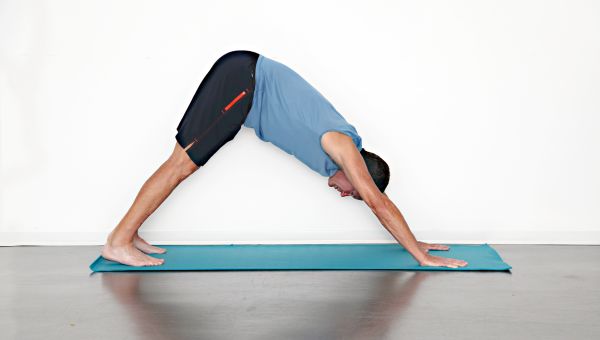
Downward Dog
This pose stretches your back and helps build strength in the arms and legs. After cat-cow, remain on your hands and knees with your back in a neutral position. Walk your hands forward and press them into the floor. Straighten your knees, allowing your hips to lift so your body forms an inverted V. Lower your heels toward the ground if you can. Hold for several breaths.
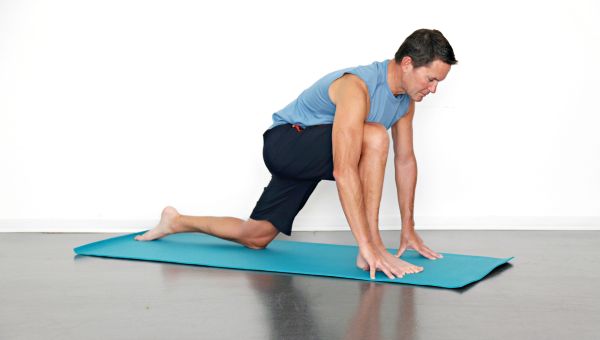
Low Lunge
This lunge variation strengthens your quads and glutes and improves balance and concentration. From a standing position, step your right foot forward. Bend your right knee and let your hips ease down toward the floor. Your knee should be at a right angle over your ankle. Bend your left knee so that it rests on the floor with your foot tucked under. Sweep your arms above your head. (If you have a neck, spinal, or shoulder injury, rest your hands on the floor.) Hold for one minute, taking several deep breaths. Switch to the other side.
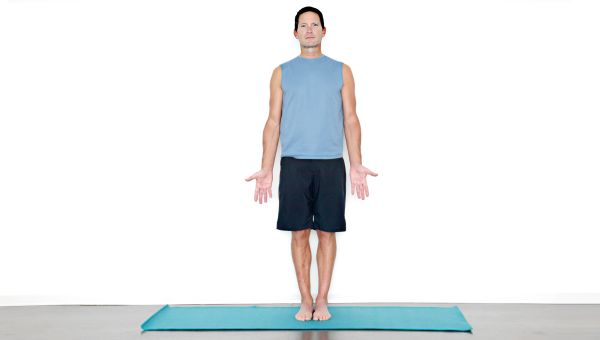
Mountain Pose
This is a calming pose. Stand straight with your arms at your sides, palms forward, and your heels slightly apart. Lift your toes and spread them apart before placing them back on the floor. Your weight should be evenly balanced between both feet, with your legs engaged and your kneecaps lifted. Hold for one minute, taking several slow breaths.
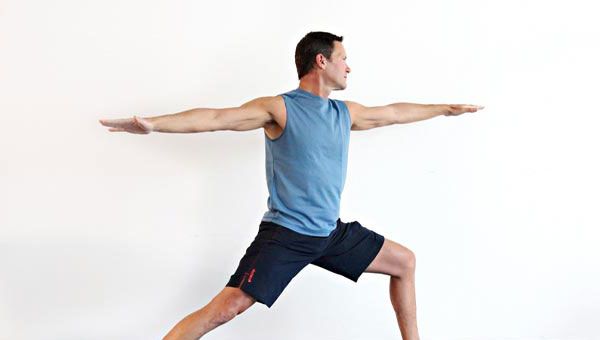
Warrior II
Standing in mountain pose at the front of your mat, take a big step back with your left foot. Keep your right foot pointing straight and turn your left foot so it’s at a 90-degree angle to your right foot. Exhale as you bend your right leg. Extend your arms to the side at shoulder height, keeping them parallel to the floor. Turn your head to the right, looking straight over your extended right arm. Hold for one minute. Remember to take slow, deep breaths. Repeat with your left foot in front.
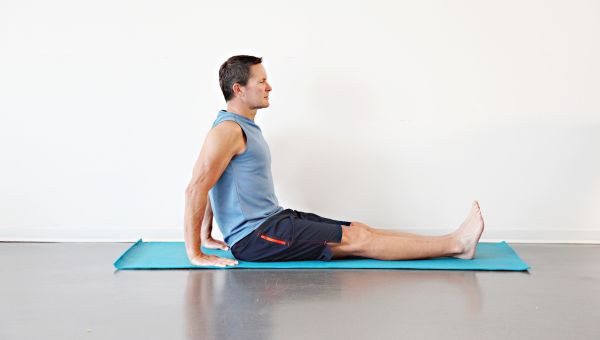
Staff Pose
Sit up straight on the floor with your legs extended in front of you and your arms by your sides, palms facing down. If sitting up tall feels difficult, try sitting against a wall or on a folded blanket. Lift your shoulders and roll your shoulder blades back so they touch the wall; your head and lower back should not touch it. Flex your feet, pressing your thighs toward the floor. Take several breaths, slowly inhaling and exhaling. Hold for a minute or more, if you can.
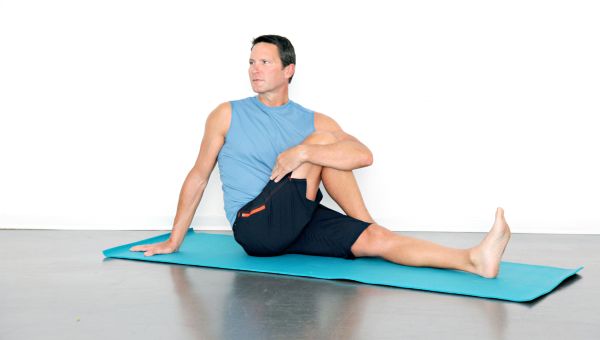
Seated Spinal Twist
Sit up straight with your legs extended in front of you. Bend your right knee and cross your right foot over your left leg. Set your foot flat on the floor. Wrap your left arm around your knee and hug it toward your chest. Place your right hand on the floor behind you for support. Inhale, lengthen your spine and exhale gently, twisting to the right and turning your gaze behind you. Release the pose slowly, turning your head last. Repeat on the other side.

Srivastava, R and Prasad, R, and Kardam, S. Management of Respiratory System Disorders through Yoga. Current trends in Cardiorespiratory medicine. AIASPGA & SPMF Varanasi. Published September 2019.
Lauche R, Hunter DJ, Adams J, Cramer H. Yoga for Osteoarthritis: a Systematic Review and Meta-analysis. Curr Rheumatol Rep. 2019;21(9):47. Published 2019 Jul 23.
Zhang Q, Young L, Li F. Network Meta-Analysis of Various Nonpharmacological Interventions on Pain Relief in Older Adults With Osteoarthritis. Am J Phys Med Rehabil. 2019;98(6):469-478.
Wang Y, Lu S, Wang R, et al. Integrative effect of yoga practice in patients with knee arthritis: A PRISMA-compliant meta-analysis. Medicine (Baltimore). 2018;97(31):e11742.
More On


video

article


video


video


video
